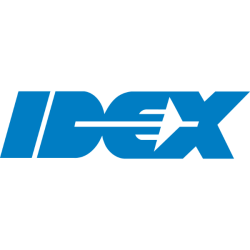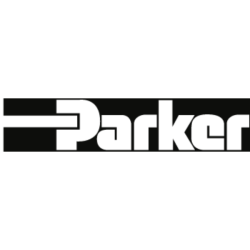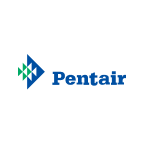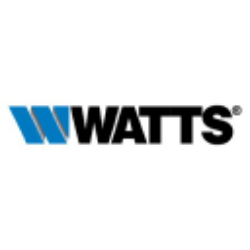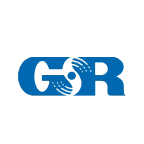GGG

Graco Inc.
GGG
(3.5)84,07 USD
20.74% ROA
20.54% ROE
28.93x PER
14.397.989.130,00 USD
1.94% DER
1.17% Yield
22.87% NPM
Graco Inc. Stock Analysis
Graco Inc. Fundamental Analysis
Fundamental analysis in stock investing is like studying the foundation of a house before buying it. It involves looking at a company's financial health, like its earnings, assets, and debts, to determine if it's a good investment based on its fundamental strength and potential for growth.
| # | Analysis | Rating |
|---|---|---|
| 1 |
ROE
ROE surpassing expectations (25.65%) highlights strong profitability and efficient use of shareholders' equity, making it an appealing investment prospect. |
|
| 2 |
ROA
The stock's ability to make a lot of money from its assets shows that it is very profitable, making it a good choice for people who want to invest and make a lot of money. |
|
| 3 |
DER
The stock has a low debt to equity ratio (3%), which means it has a small amount of debt compared to the ownership it holds |
|
| 4 |
Revenue Growth
This company's revenue has experienced steady growth over the last five years, indicating a reliable and prosperous financial trajectory. |
|
| 5 |
Dividend Growth
Investors can take confidence in the company's impressive track record of annual dividend growth over the last five years, showcasing a commitment to rewarding shareholders. |
|
| 6 |
Dividend
Investors can trust the company's impressive dividend track record, consistently distributing dividends over the past five years, showcasing a strong commitment to rewarding shareholders. |
|
| 7 |
Net Profit Growth
The net profit of this company has shown steady growth over the past three years, highlighting its positive financial trajectory and making it an appealing choice for potential investors. |
|
| 8 |
Buffet Intrinsic Value
Warren Buffett's formula suggests that the company's stock is undervalued (377), making it an appealing investment prospect with its intrinsic value surpassing the current market price. |
|
| 9 |
PBV
The stock's high Price-to-Book Value (P/BV) ratio (6.22x) suggests it's overvalued, potentially making it an expensive investment. |
|
| 10 |
Assets Growth
Company's revenue has remained stagnant over the past three years, indicating a lack of growth and making it a less favorable option. |
|
| 11 |
Graham Number
Based on the Graham number, this company's stock price appears to be higher than its intrinsic value, signaling a potentially unfavorable investment choice. |
Graco Inc. Technical Analysis
Technical analysis in stock investing is like reading the patterns on a weather map to predict future weather conditions. It involves studying past stock price movements and trading volumes to make predictions about where a stock's price might go next, without necessarily looking at the company's financial health.
| # | Analysis | Recommendation |
|---|---|---|
| 1 | Awesome Oscillator | Buy |
| 2 | MACD | Buy |
| 3 | RSI | Hold |
| 4 | Stoch RSI | Sell |
Graco Inc. Price Chart
Financial Statements
Financial statements are like report cards for companies. They show how much money a company makes (income statement), what it owns and owes (balance sheet), and where it spends its money (cash flow statement), helping stock investors understand if a company is healthy and worth investing in.
Income Statements
An income statement for a company is like a scoreboard for its profits and losses. It shows how much money the company made (revenue) and how much it spent to make that money (expenses), helping stock investors see if a company is making a profit or not.
Revenue in stock investing is the total amount of money a company earns from its sales, and it's a key factor that investors consider to assess a company's financial performance and growth potential.
| Year | Revenue | Growth |
|---|---|---|
| 1983 | 140.400.000 | |
| 1984 | 166.500.000 | 15.68% |
| 1985 | 208.300.000 | 20.07% |
| 1986 | 225.100.000 | 7.46% |
| 1987 | 239.700.000 | 6.09% |
| 1988 | 267.900.000 | 10.53% |
| 1989 | 297.700.000 | 10.01% |
| 1990 | 321.300.000 | 7.35% |
| 1991 | 311.900.000 | -3.01% |
| 1992 | 320.300.000 | 2.62% |
| 1993 | 322.600.000 | 0.71% |
| 1994 | 360.000.000 | 10.39% |
| 1995 | 386.300.000 | 6.81% |
| 1996 | 391.800.000 | 1.4% |
| 1997 | 413.900.000 | 5.34% |
| 1998 | 432.200.000 | 4.23% |
| 1999 | 442.500.000 | 2.33% |
| 2000 | 494.373.000 | 10.49% |
| 2001 | 472.819.000 | -4.56% |
| 2002 | 487.048.000 | 2.92% |
| 2003 | 535.098.000 | 8.98% |
| 2004 | 605.032.000 | 11.56% |
| 2005 | 731.702.000 | 17.31% |
| 2006 | 816.468.000 | 10.38% |
| 2007 | 841.339.000 | 2.96% |
| 2008 | 817.270.000 | -2.95% |
| 2009 | 579.212.000 | -41.1% |
| 2010 | 744.065.000 | 22.16% |
| 2011 | 895.283.000 | 16.89% |
| 2012 | 1.012.456.000 | 11.57% |
| 2013 | 1.104.024.000 | 8.29% |
| 2014 | 1.221.130.000 | 9.59% |
| 2015 | 1.286.485.000 | 5.08% |
| 2016 | 1.329.293.000 | 3.22% |
| 2017 | 1.474.744.000 | 9.86% |
| 2018 | 1.653.292.000 | 10.8% |
| 2019 | 1.646.045.000 | -0.44% |
| 2020 | 1.650.115.000 | 0.25% |
| 2021 | 1.987.608.000 | 16.98% |
| 2022 | 2.143.521.000 | 7.27% |
| 2023 | 2.158.688.000 | 0.7% |
| 2023 | 2.195.606.000 | 1.68% |
| 2024 | 2.212.972.000 | 0.78% |
Research and Development Expenses are the costs a company incurs to create and improve its products or services, which can be important for investors to evaluate a company's innovation and potential for future growth.
| Year | Research and Development Expenses | Growth |
|---|---|---|
| 1983 | 5.900.000 | |
| 1984 | 7.400.000 | 20.27% |
| 1985 | 0 | 0% |
| 1986 | 0 | 0% |
| 1987 | 0 | 0% |
| 1988 | 0 | 0% |
| 1989 | 0 | 0% |
| 1990 | 0 | 0% |
| 1991 | 0 | 0% |
| 1992 | 0 | 0% |
| 1993 | 0 | 0% |
| 1994 | 14.600.000 | 100% |
| 1995 | 15.700.000 | 7.01% |
| 1996 | 17.900.000 | 12.29% |
| 1997 | 17.800.000 | -0.56% |
| 1998 | 18.200.000 | 2.2% |
| 1999 | 19.700.000 | 7.61% |
| 2000 | 19.998.000 | 1.49% |
| 2001 | 20.808.000 | 3.89% |
| 2002 | 18.172.000 | -14.51% |
| 2003 | 18.087.000 | -0.47% |
| 2004 | 21.783.000 | 16.97% |
| 2005 | 26.970.000 | 19.23% |
| 2006 | 29.970.000 | 10.01% |
| 2007 | 30.277.000 | 1.01% |
| 2008 | 36.558.000 | 17.18% |
| 2009 | 37.538.000 | 2.61% |
| 2010 | 37.699.000 | 0.43% |
| 2011 | 41.554.000 | 9.28% |
| 2012 | 48.921.000 | 15.06% |
| 2013 | 51.428.000 | 4.87% |
| 2014 | 54.246.000 | 5.19% |
| 2015 | 58.559.000 | 7.37% |
| 2016 | 60.606.000 | 3.38% |
| 2017 | 60.106.000 | -0.83% |
| 2018 | 63.124.000 | 4.78% |
| 2019 | 67.557.000 | 6.56% |
| 2020 | 72.194.000 | 6.42% |
| 2021 | 79.651.000 | 9.36% |
| 2022 | 80.008.000 | 0.45% |
| 2023 | 79.268.000 | -0.93% |
| 2023 | 82.822.000 | 4.29% |
| 2024 | 87.588.000 | 5.44% |
General and Administrative Expenses are the costs a company incurs to run its day-to-day operations, such as office rent, salaries, and utilities, which investors consider to understand a company's overall efficiency and management effectiveness.
| Year | General and Administrative Expenses | Growth |
|---|---|---|
| 1983 | 52.700.000 | |
| 1984 | 61.700.000 | 14.59% |
| 1985 | 0 | 0% |
| 1986 | 0 | 0% |
| 1987 | 0 | 0% |
| 1988 | 0 | 0% |
| 1989 | 0 | 0% |
| 1990 | 0 | 0% |
| 1991 | 0 | 0% |
| 1992 | 0 | 0% |
| 1993 | 0 | 0% |
| 1994 | 0 | 0% |
| 1995 | 0 | 0% |
| 1996 | 0 | 0% |
| 1997 | 0 | 0% |
| 1998 | 0 | 0% |
| 1999 | 0 | 0% |
| 2000 | 0 | 0% |
| 2001 | 0 | 0% |
| 2002 | 0 | 0% |
| 2003 | 36.456.000 | 100% |
| 2004 | 0 | 0% |
| 2005 | 51.175.000 | 100% |
| 2006 | 58.866.000 | 13.07% |
| 2007 | 60.161.000 | 2.15% |
| 2008 | 69.589.000 | 13.55% |
| 2009 | 65.261.000 | -6.63% |
| 2010 | 76.702.000 | 14.92% |
| 2011 | 87.861.000 | 12.7% |
| 2012 | 113.409.000 | 22.53% |
| 2013 | 98.405.000 | -15.25% |
| 2014 | 108.814.000 | 9.57% |
| 2015 | 122.161.000 | 10.93% |
| 2016 | 126.481.000 | 3.42% |
| 2017 | 139.034.000 | 9.03% |
| 2018 | 137.515.000 | -1.1% |
| 2019 | 133.418.000 | -3.07% |
| 2020 | 135.525.000 | 1.55% |
| 2021 | 151.449.000 | 10.51% |
| 2022 | 153.783.000 | 1.52% |
| 2023 | 167.292.000 | 8.08% |
| 2023 | 171.444.000 | 2.42% |
| 2024 | 194.388.000 | 11.8% |
EBITDA stands for Earnings Before Interest, Taxes, Depreciation, and Amortization. It is a measure that helps stock investors analyze a company's profitability by looking at its earnings without considering certain expenses. This helps to get a clearer picture of the company's financial performance and its ability to generate cash flow.
| Year | EBITDA | Growth |
|---|---|---|
| 1983 | 7.200.000 | |
| 1984 | 15.000.000 | 52% |
| 1985 | 28.300.000 | 47% |
| 1986 | 34.000.000 | 16.76% |
| 1987 | 31.800.000 | -6.92% |
| 1988 | 33.300.000 | 4.5% |
| 1989 | 37.500.000 | 11.2% |
| 1990 | 41.800.000 | 10.29% |
| 1991 | 28.500.000 | -46.67% |
| 1992 | 28.100.000 | -1.42% |
| 1993 | 26.100.000 | -7.66% |
| 1994 | 36.800.000 | 29.08% |
| 1995 | 56.400.000 | 34.75% |
| 1996 | 65.800.000 | 14.29% |
| 1997 | 79.000.000 | 16.71% |
| 1998 | 90.624.000 | 12.83% |
| 1999 | 107.918.000 | 16.03% |
| 2000 | 126.694.000 | 14.82% |
| 2001 | 118.676.000 | -6.76% |
| 2002 | 112.846.000 | -5.17% |
| 2003 | 128.833.000 | 12.41% |
| 2004 | 179.591.000 | 28.26% |
| 2005 | 214.908.000 | 16.43% |
| 2006 | 252.045.000 | 14.73% |
| 2007 | 261.356.000 | 3.56% |
| 2008 | 221.707.000 | -17.88% |
| 2009 | 108.661.000 | -104.04% |
| 2010 | 183.197.000 | 40.69% |
| 2011 | 251.242.000 | 27.08% |
| 2012 | 275.361.000 | 8.76% |
| 2013 | 344.285.000 | 20.02% |
| 2014 | 369.321.000 | 6.78% |
| 2015 | 346.732.000 | -6.51% |
| 2016 | 354.454.000 | 2.18% |
| 2017 | 408.879.000 | 13.31% |
| 2018 | 472.905.000 | 13.54% |
| 2019 | 466.687.000 | -1.33% |
| 2020 | 440.431.000 | -5.96% |
| 2021 | 578.005.000 | 23.8% |
| 2022 | 641.618.000 | 9.91% |
| 2023 | 731.736.000 | 12.32% |
| 2023 | 686.593.000 | -6.57% |
| 2024 | 724.672.000 | 5.25% |
Gross profit is the money a company makes from selling its products or services after subtracting the cost of producing or providing them, and it is an important measure for investors to understand a company's profitability.
| Year | Gross Profit | Growth |
|---|---|---|
| 1983 | 67.200.000 | |
| 1984 | 82.100.000 | 18.15% |
| 1985 | 107.600.000 | 23.7% |
| 1986 | 121.600.000 | 11.51% |
| 1987 | 129.900.000 | 6.39% |
| 1988 | 142.700.000 | 8.97% |
| 1989 | 151.200.000 | 5.62% |
| 1990 | 168.000.000 | 10% |
| 1991 | 160.500.000 | -4.67% |
| 1992 | 165.300.000 | 2.9% |
| 1993 | 162.400.000 | -1.79% |
| 1994 | 184.400.000 | 11.93% |
| 1995 | 200.700.000 | 8.12% |
| 1996 | 208.700.000 | 3.83% |
| 1997 | 216.500.000 | 3.6% |
| 1998 | 233.200.000 | 7.16% |
| 1999 | 245.900.000 | 5.16% |
| 2000 | 266.304.000 | 7.66% |
| 2001 | 234.762.000 | -13.44% |
| 2002 | 250.158.000 | 6.15% |
| 2003 | 282.802.000 | 11.54% |
| 2004 | 328.410.000 | 13.89% |
| 2005 | 379.350.000 | 13.43% |
| 2006 | 433.957.000 | 12.58% |
| 2007 | 447.426.000 | 3.01% |
| 2008 | 432.177.000 | -3.53% |
| 2009 | 292.816.000 | -47.59% |
| 2010 | 403.445.000 | 27.42% |
| 2011 | 500.205.000 | 19.34% |
| 2012 | 550.530.000 | 9.14% |
| 2013 | 607.455.000 | 9.37% |
| 2014 | 666.736.000 | 8.89% |
| 2015 | 684.700.000 | 2.62% |
| 2016 | 708.239.000 | 3.32% |
| 2017 | 793.049.000 | 10.69% |
| 2018 | 882.539.000 | 10.14% |
| 2019 | 859.756.000 | -2.65% |
| 2020 | 854.937.000 | -0.56% |
| 2021 | 1.033.949.000 | 17.31% |
| 2022 | 1.057.439.000 | 2.22% |
| 2023 | 1.138.096.000 | 7.09% |
| 2023 | 1.161.021.000 | 1.97% |
| 2024 | 1.203.416.000 | 3.52% |
Net income in stock investing is like the money a company actually gets to keep as profit after paying all its bills, and it's an important measure to understand how well a company is doing financially.
| Year | Net Profit | Growth |
|---|---|---|
| 1983 | 4.000.000 | |
| 1984 | 7.100.000 | 43.66% |
| 1985 | 10.800.000 | 34.26% |
| 1986 | 14.300.000 | 24.48% |
| 1987 | 12.800.000 | -11.72% |
| 1988 | 13.300.000 | 3.76% |
| 1989 | 14.500.000 | 8.28% |
| 1990 | 17.700.000 | 18.08% |
| 1991 | 8.900.000 | -98.88% |
| 1992 | 5.300.000 | -67.92% |
| 1993 | 9.500.000 | 44.21% |
| 1994 | 15.300.000 | 37.91% |
| 1995 | 27.700.000 | 44.77% |
| 1996 | 36.200.000 | 23.48% |
| 1997 | 44.700.000 | 19.02% |
| 1998 | 47.300.000 | 5.5% |
| 1999 | 59.300.000 | 20.24% |
| 2000 | 70.108.000 | 15.42% |
| 2001 | 65.266.000 | -7.42% |
| 2002 | 75.625.000 | 13.7% |
| 2003 | 86.713.000 | 12.79% |
| 2004 | 108.681.000 | 20.21% |
| 2005 | 125.854.000 | 13.65% |
| 2006 | 149.766.000 | 15.97% |
| 2007 | 152.836.000 | 2.01% |
| 2008 | 120.879.000 | -26.44% |
| 2009 | 48.967.000 | -146.86% |
| 2010 | 102.840.000 | 52.39% |
| 2011 | 142.328.000 | 27.74% |
| 2012 | 149.126.000 | 4.56% |
| 2013 | 210.822.000 | 29.26% |
| 2014 | 225.573.000 | 6.54% |
| 2015 | 345.713.000 | 34.75% |
| 2016 | 40.674.000 | -749.96% |
| 2017 | 252.412.000 | 83.89% |
| 2018 | 341.054.000 | 25.99% |
| 2019 | 343.853.000 | 0.81% |
| 2020 | 330.456.000 | -4.05% |
| 2021 | 439.866.000 | 24.87% |
| 2022 | 460.645.000 | 4.51% |
| 2023 | 532.492.000 | 13.49% |
| 2023 | 506.511.000 | -5.13% |
| 2024 | 531.912.000 | 4.78% |
EPS, or earnings per share, is a measure that shows how much profit a company has earned for each outstanding share of its stock, and it is important for stock investors as it helps understand the profitability of a company and compare it with other companies in the market.
| Year | Earning per Share (EPS) | Growth |
|---|---|---|
| 1983 | 0 | |
| 1984 | 0 | 0% |
| 1985 | 0 | 0% |
| 1986 | 0 | 0% |
| 1987 | 0 | 0% |
| 1988 | 0 | 0% |
| 1989 | 0 | 0% |
| 1990 | 0 | 0% |
| 1991 | 0 | 0% |
| 1992 | 0 | 0% |
| 1993 | 0 | 0% |
| 1994 | 0 | 0% |
| 1995 | 0 | 0% |
| 1996 | 0 | 0% |
| 1997 | 0 | 0% |
| 1998 | 0 | 0% |
| 1999 | 0 | 0% |
| 2000 | 0 | 0% |
| 2001 | 0 | 0% |
| 2002 | 0 | 0% |
| 2003 | 0 | 0% |
| 2004 | 1 | 0% |
| 2005 | 1 | 0% |
| 2006 | 1 | 0% |
| 2007 | 1 | 0% |
| 2008 | 1 | 0% |
| 2009 | 0 | 0% |
| 2010 | 1 | 0% |
| 2011 | 1 | 0% |
| 2012 | 1 | 0% |
| 2013 | 1 | 100% |
| 2014 | 1 | 0% |
| 2015 | 2 | 50% |
| 2016 | 0 | 0% |
| 2017 | 2 | 100% |
| 2018 | 2 | 50% |
| 2019 | 2 | 0% |
| 2020 | 2 | -100% |
| 2021 | 3 | 50% |
| 2022 | 3 | 0% |
| 2023 | 3 | 33.33% |
| 2023 | 3 | 0% |
| 2024 | 3 | 0% |
Cashflow Statements
Cashflow statements show the movement of money in and out of a company, helping stock investors understand how much money a company makes and spends. By examining cashflow statements, investors can assess if a company is generating enough cash to pay its bills, invest in growth, and provide returns to stockholders.
Free cash flow is the leftover cash that a company generates after covering its operating expenses and capital expenditures, which is important for stock investors as it shows how much money a company has available to invest in growth, pay dividends, or reduce debt.
| Year | Free Cashflow | Growth |
|---|---|---|
| 1984 | -7.100.000 | |
| 1985 | 12.200.000 | 158.2% |
| 1986 | 6.500.000 | -87.69% |
| 1987 | 11.400.000 | 42.98% |
| 1988 | 2.800.000 | -307.14% |
| 1989 | 10.800.000 | 74.07% |
| 1990 | 11.400.000 | 5.26% |
| 1991 | 21.000.000 | 45.71% |
| 1992 | 15.900.000 | -32.08% |
| 1993 | 6.900.000 | -130.43% |
| 1994 | -14.500.000 | 147.59% |
| 1995 | 31.900.000 | 145.45% |
| 1996 | 18.600.000 | -71.51% |
| 1997 | 16.200.000 | -14.81% |
| 1998 | 65.100.000 | 75.12% |
| 1999 | 48.300.000 | -34.78% |
| 2000 | 65.086.000 | 25.79% |
| 2001 | 58.978.000 | -10.36% |
| 2002 | 83.420.000 | 29.3% |
| 2003 | 94.292.000 | 11.53% |
| 2004 | 106.015.000 | 11.06% |
| 2005 | 133.320.000 | 20.48% |
| 2006 | 121.775.000 | -9.48% |
| 2007 | 140.143.000 | 13.11% |
| 2008 | 133.376.000 | -5.07% |
| 2009 | 134.467.000 | 0.81% |
| 2010 | 83.596.000 | -60.85% |
| 2011 | 137.259.000 | 39.1% |
| 2012 | 171.448.000 | 19.94% |
| 2013 | 219.736.000 | 21.98% |
| 2014 | 210.619.000 | -4.33% |
| 2015 | 147.890.000 | -42.42% |
| 2016 | 226.980.000 | 34.84% |
| 2017 | 297.670.000 | 23.75% |
| 2018 | 314.131.000 | 5.24% |
| 2019 | 290.781.000 | -8.03% |
| 2020 | 322.697.000 | 9.89% |
| 2021 | 323.330.000 | 0.2% |
| 2022 | 176.233.000 | -83.47% |
| 2023 | 466.242.000 | 62.2% |
| 2023 | 155.653.000 | -199.54% |
| 2024 | 102.742.000 | -51.5% |
Operating cash flow represents the cash generated or consumed by a company's day-to-day operations, excluding external investing or financing activities, and is crucial for stock investors as it shows how much cash a company is generating from its core business operations.
| Year | Operating Cashflow | Growth |
|---|---|---|
| 1984 | 5.800.000 | |
| 1985 | 19.100.000 | 69.63% |
| 1986 | 12.100.000 | -57.85% |
| 1987 | 19.400.000 | 37.63% |
| 1988 | 12.500.000 | -55.2% |
| 1989 | 23.100.000 | 45.89% |
| 1990 | 23.500.000 | 1.7% |
| 1991 | 29.400.000 | 20.07% |
| 1992 | 26.100.000 | -12.64% |
| 1993 | 23.100.000 | -12.99% |
| 1994 | 8.600.000 | -168.6% |
| 1995 | 51.700.000 | 83.37% |
| 1996 | 48.600.000 | -6.38% |
| 1997 | 36.300.000 | -33.88% |
| 1998 | 77.100.000 | 52.92% |
| 1999 | 75.800.000 | -1.72% |
| 2000 | 79.609.000 | 4.78% |
| 2001 | 89.181.000 | 10.73% |
| 2002 | 95.673.000 | 6.79% |
| 2003 | 109.807.000 | 12.87% |
| 2004 | 122.908.000 | 10.66% |
| 2005 | 153.224.000 | 19.79% |
| 2006 | 155.629.000 | 1.55% |
| 2007 | 177.097.000 | 12.12% |
| 2008 | 162.478.000 | -9% |
| 2009 | 146.532.000 | -10.88% |
| 2010 | 101.123.000 | -44.9% |
| 2011 | 162.044.000 | 37.6% |
| 2012 | 189.682.000 | 14.57% |
| 2013 | 243.055.000 | 21.96% |
| 2014 | 241.255.000 | -0.75% |
| 2015 | 189.639.000 | -27.22% |
| 2016 | 269.093.000 | 29.53% |
| 2017 | 337.864.000 | 20.35% |
| 2018 | 367.985.000 | 8.19% |
| 2019 | 418.734.000 | 12.12% |
| 2020 | 394.035.000 | -6.27% |
| 2021 | 456.896.000 | 13.76% |
| 2022 | 377.394.000 | -21.07% |
| 2023 | 651.017.000 | 42.03% |
| 2023 | 209.047.000 | -211.42% |
| 2024 | 138.999.000 | -50.39% |
Capex, short for capital expenditures, refers to the money a company spends on acquiring or upgrading tangible assets like buildings, equipment, or technology, which is important for stock investors as it indicates how much a company is investing in its infrastructure to support future growth and profitability.
| Year | Capital Expenditure | Growth |
|---|---|---|
| 1984 | 12.900.000 | |
| 1985 | 6.900.000 | -86.96% |
| 1986 | 5.600.000 | -23.21% |
| 1987 | 8.000.000 | 30% |
| 1988 | 9.700.000 | 17.53% |
| 1989 | 12.300.000 | 21.14% |
| 1990 | 12.100.000 | -1.65% |
| 1991 | 8.400.000 | -44.05% |
| 1992 | 10.200.000 | 17.65% |
| 1993 | 16.200.000 | 37.04% |
| 1994 | 23.100.000 | 29.87% |
| 1995 | 19.800.000 | -16.67% |
| 1996 | 30.000.000 | 34% |
| 1997 | 20.100.000 | -49.25% |
| 1998 | 12.000.000 | -67.5% |
| 1999 | 27.500.000 | 56.36% |
| 2000 | 14.523.000 | -89.35% |
| 2001 | 30.203.000 | 51.92% |
| 2002 | 12.253.000 | -146.49% |
| 2003 | 15.515.000 | 21.02% |
| 2004 | 16.893.000 | 8.16% |
| 2005 | 19.904.000 | 15.13% |
| 2006 | 33.854.000 | 41.21% |
| 2007 | 36.954.000 | 8.39% |
| 2008 | 29.102.000 | -26.98% |
| 2009 | 12.065.000 | -141.21% |
| 2010 | 17.527.000 | 31.16% |
| 2011 | 24.785.000 | 29.28% |
| 2012 | 18.234.000 | -35.93% |
| 2013 | 23.319.000 | 21.81% |
| 2014 | 30.636.000 | 23.88% |
| 2015 | 41.749.000 | 26.62% |
| 2016 | 42.113.000 | 0.86% |
| 2017 | 40.194.000 | -4.77% |
| 2018 | 53.854.000 | 25.36% |
| 2019 | 127.953.000 | 57.91% |
| 2020 | 71.338.000 | -79.36% |
| 2021 | 133.566.000 | 46.59% |
| 2022 | 201.161.000 | 33.6% |
| 2023 | 184.775.000 | -8.87% |
| 2023 | 53.394.000 | -246.06% |
| 2024 | 36.257.000 | -47.27% |
Balance Sheet
Balance sheets provide a snapshot of a company's financial health and its assets (such as cash, inventory, and property) and liabilities (like debts and obligations) at a specific point in time. For stock investors, balance sheets help assess the company's overall worth and evaluate its ability to meet financial obligations and support future growth.
Equity refers to the ownership interest or stake that shareholders have in a company, representing their claim on its assets and earnings after all debts and liabilities are paid.
| Year | Equity | Growth |
|---|---|---|
| 1983 | 63.200.000 | |
| 1984 | 68.900.000 | 8.27% |
| 1985 | 77.100.000 | 10.64% |
| 1986 | 88.800.000 | 13.18% |
| 1987 | 52.800.000 | -68.18% |
| 1988 | 61.600.000 | 14.29% |
| 1989 | 76.200.000 | 19.16% |
| 1990 | 91.800.000 | 16.99% |
| 1991 | 97.500.000 | 5.85% |
| 1992 | 100.200.000 | 2.69% |
| 1993 | 74.700.000 | -34.14% |
| 1994 | 81.900.000 | 8.79% |
| 1995 | 103.600.000 | 20.95% |
| 1996 | 126.100.000 | 17.84% |
| 1997 | 157.500.000 | 19.94% |
| 1998 | 9.300.000 | -1593.55% |
| 1999 | 62.900.000 | 85.21% |
| 2000 | 110.855.000 | 43.26% |
| 2001 | 173.740.000 | 36.19% |
| 2002 | 245.406.000 | 29.2% |
| 2003 | 169.810.000 | -44.52% |
| 2004 | 230.837.000 | 26.44% |
| 2005 | 287.684.000 | 19.76% |
| 2006 | 331.004.000 | 13.09% |
| 2007 | 244.674.000 | -35.28% |
| 2008 | 167.634.000 | -45.96% |
| 2009 | 209.654.000 | 20.04% |
| 2010 | 264.114.000 | 20.62% |
| 2011 | 322.740.000 | 18.17% |
| 2012 | 454.114.000 | 28.93% |
| 2013 | 634.365.000 | 28.41% |
| 2014 | 596.032.000 | -6.43% |
| 2015 | 635.551.000 | 6.22% |
| 2016 | 573.820.000 | -10.76% |
| 2017 | 723.063.000 | 20.64% |
| 2018 | 751.873.000 | 3.83% |
| 2019 | 1.024.931.000 | 26.64% |
| 2020 | 1.283.904.000 | 20.17% |
| 2021 | 1.709.343.000 | 24.89% |
| 2022 | 1.859.652.000 | 8.08% |
| 2023 | 2.188.526.000 | 15.03% |
| 2023 | 2.224.225.000 | 1.61% |
| 2024 | 2.418.485.000 | 8.03% |
Assets represent the valuable resources that a company owns, such as cash, inventory, property, and equipment, and understanding a company's assets helps investors assess its value and potential for generating future profits.
| Year | Assets | Growth |
|---|---|---|
| 1983 | 108.200.000 | |
| 1984 | 122.000.000 | 11.31% |
| 1985 | 140.000.000 | 12.86% |
| 1986 | 155.600.000 | 10.03% |
| 1987 | 152.100.000 | -2.3% |
| 1988 | 172.100.000 | 11.62% |
| 1989 | 181.700.000 | 5.28% |
| 1990 | 209.500.000 | 13.27% |
| 1991 | 205.900.000 | -1.75% |
| 1992 | 220.400.000 | 6.58% |
| 1993 | 216.400.000 | -1.85% |
| 1994 | 228.400.000 | 5.25% |
| 1995 | 217.800.000 | -4.87% |
| 1996 | 247.800.000 | 12.11% |
| 1997 | 264.500.000 | 6.31% |
| 1998 | 233.700.000 | -13.18% |
| 1999 | 236.000.000 | 0.97% |
| 2000 | 237.976.000 | 0.83% |
| 2001 | 276.113.000 | 13.81% |
| 2002 | 355.850.000 | 22.41% |
| 2003 | 397.390.000 | 10.45% |
| 2004 | 371.714.000 | -6.91% |
| 2005 | 445.630.000 | 16.59% |
| 2006 | 511.603.000 | 12.9% |
| 2007 | 536.724.000 | 4.68% |
| 2008 | 579.850.000 | 7.44% |
| 2009 | 476.434.000 | -21.71% |
| 2010 | 530.474.000 | 10.19% |
| 2011 | 874.309.000 | 39.33% |
| 2012 | 1.321.734.000 | 33.85% |
| 2013 | 1.327.228.000 | 0.41% |
| 2014 | 1.544.778.000 | 14.08% |
| 2015 | 1.391.352.000 | -11.03% |
| 2016 | 1.243.109.000 | -11.93% |
| 2017 | 1.379.205.000 | 9.87% |
| 2018 | 1.472.741.000 | 6.35% |
| 2019 | 1.692.210.000 | 12.97% |
| 2020 | 1.988.128.000 | 14.88% |
| 2021 | 2.443.198.000 | 18.63% |
| 2022 | 2.438.900.000 | -0.18% |
| 2023 | 2.674.917.000 | 8.82% |
| 2023 | 2.722.007.000 | 1.73% |
| 2024 | 2.879.897.000 | 5.48% |
Liabilities refer to the financial obligations or debts that a company owes to creditors or external parties, and understanding a company's liabilities is important for investors as it helps assess the company's financial risk and ability to meet its obligations.
| Year | Liabilities | Growth |
|---|---|---|
| 1983 | 45.100.000 | |
| 1984 | 53.100.000 | 15.07% |
| 1985 | 62.900.000 | 15.58% |
| 1986 | 66.800.000 | 5.84% |
| 1987 | 99.300.000 | 32.73% |
| 1988 | 110.500.000 | 10.14% |
| 1989 | 105.500.000 | -4.74% |
| 1990 | 117.700.000 | 10.37% |
| 1991 | 108.400.000 | -8.58% |
| 1992 | 120.200.000 | 9.82% |
| 1993 | 141.700.000 | 15.17% |
| 1994 | 146.500.000 | 3.28% |
| 1995 | 114.200.000 | -28.28% |
| 1996 | 121.700.000 | 6.16% |
| 1997 | 107.000.000 | -13.74% |
| 1998 | 224.400.000 | 52.32% |
| 1999 | 173.100.000 | -29.64% |
| 2000 | 127.121.000 | -36.17% |
| 2001 | 102.373.000 | -24.17% |
| 2002 | 110.444.000 | 7.31% |
| 2003 | 227.580.000 | 51.47% |
| 2004 | 140.877.000 | -61.55% |
| 2005 | 157.946.000 | 10.81% |
| 2006 | 180.599.000 | 12.54% |
| 2007 | 292.050.000 | 38.16% |
| 2008 | 412.216.000 | 29.15% |
| 2009 | 266.780.000 | -54.52% |
| 2010 | 266.360.000 | -0.16% |
| 2011 | 551.569.000 | 51.71% |
| 2012 | 867.620.000 | 36.43% |
| 2013 | 692.863.000 | -25.22% |
| 2014 | 948.746.000 | 26.97% |
| 2015 | 755.801.000 | -25.53% |
| 2016 | 669.289.000 | -12.93% |
| 2017 | 656.142.000 | -2% |
| 2018 | 720.868.000 | 8.98% |
| 2019 | 667.279.000 | -8.03% |
| 2020 | 704.224.000 | 5.25% |
| 2021 | 733.855.000 | 4.04% |
| 2022 | 579.248.000 | -26.69% |
| 2023 | 486.391.000 | -19.09% |
| 2023 | 497.782.000 | 2.29% |
| 2024 | 461.412.000 | -7.88% |
Graco Inc. Financial Ratio (TTM)
Valuation Metrics
- Revenue per Share
- 12.72
- Net Income per Share
- 2.95
- Price to Earning Ratio
- 28.93x
- Price To Sales Ratio
- 6.69x
- POCF Ratio
- 23
- PFCF Ratio
- 31.26
- Price to Book Ratio
- 5.96
- EV to Sales
- 6.4
- EV Over EBITDA
- 19.5
- EV to Operating CashFlow
- 21.99
- EV to FreeCashFlow
- 29.91
- Earnings Yield
- 0.03
- FreeCashFlow Yield
- 0.03
- Market Cap
- 14,40 Bil.
- Enterprise Value
- 13,78 Bil.
- Graham Number
- 30.79
- Graham NetNet
- 4.12
Income Statement Metrics
- Net Income per Share
- 2.95
- Income Quality
- 1.26
- ROE
- 0.22
- Return On Assets
- 0.16
- Return On Capital Employed
- 0.23
- Net Income per EBT
- 0.83
- EBT Per Ebit
- 0.96
- Ebit per Revenue
- 0.29
- Effective Tax Rate
- 0.17
Margins
- Sales, General, & Administrative to Revenue
- 0.08
- Research & Developement to Revenue
- 0.04
- Stock Based Compensation to Revenue
- 0.01
- Gross Profit Margin
- 0.54
- Operating Profit Margin
- 0.29
- Pretax Profit Margin
- 0.27
- Net Profit Margin
- 0.23
Dividends
- Dividend Yield
- 0.01
- Dividend Yield %
- 1.17
- Payout Ratio
- 0.33
- Dividend Per Share
- 1
Operating Metrics
- Operating Cashflow per Share
- 3.71
- Free CashFlow per Share
- 2.72
- Capex to Operating CashFlow
- 0.26
- Capex to Revenue
- 0.08
- Capex to Depreciation
- 2.19
- Return on Invested Capital
- 0.21
- Return on Tangible Assets
- 0.21
- Days Sales Outstanding
- 59.48
- Days Payables Outstanding
- 27.47
- Days of Inventory on Hand
- 166.99
- Receivables Turnover
- 6.14
- Payables Turnover
- 13.29
- Inventory Turnover
- 2.19
- Capex per Share
- 0.98
Balance Sheet
- Cash per Share
- 3,94
- Book Value per Share
- 14,30
- Tangible Book Value per Share
- 11.48
- Shareholders Equity per Share
- 14.3
- Interest Debt per Share
- 0.3
- Debt to Equity
- 0.02
- Debt to Assets
- 0.02
- Net Debt to EBITDA
- -0.88
- Current Ratio
- 4.21
- Tangible Asset Value
- 1,94 Bil.
- Net Current Asset Value
- 1,06 Bil.
- Invested Capital
- 2423696000
- Working Capital
- 1,16 Bil.
- Intangibles to Total Assets
- 0.17
- Average Receivables
- 0,34 Bil.
- Average Payables
- 0,08 Bil.
- Average Inventory
- 458361000
- Debt to Market Cap
- 0
Dividends
Dividends in stock investing are like rewards that companies give to their shareholders. They are a portion of the company's profits distributed to investors, typically in the form of cash payments, as a way for them to share in the company's success.
| Year | Dividends | Growth |
|---|---|---|
| 1987 | 0 | |
| 1988 | 1 | 0% |
| 1989 | 1 | 0% |
| 1990 | 1 | 0% |
| 1991 | 1 | 0% |
| 1992 | 1 | 0% |
| 1993 | 1 | 0% |
| 1994 | 3 | 100% |
| 1995 | 1 | 0% |
| 1996 | 1 | 0% |
| 1997 | 0 | 0% |
| 1998 | 0 | 0% |
| 1999 | 0 | 0% |
| 2000 | 1 | 0% |
| 2001 | 0 | 0% |
| 2002 | 0 | 0% |
| 2003 | 0 | 0% |
| 2004 | 3 | 100% |
| 2005 | 1 | 0% |
| 2006 | 1 | 0% |
| 2007 | 1 | 0% |
| 2008 | 1 | 0% |
| 2009 | 1 | 0% |
| 2010 | 1 | 0% |
| 2011 | 1 | 0% |
| 2012 | 1 | 0% |
| 2013 | 1 | 100% |
| 2014 | 1 | 0% |
| 2015 | 1 | 0% |
| 2016 | 1 | 0% |
| 2017 | 1 | 0% |
| 2018 | 1 | 0% |
| 2019 | 1 | 0% |
| 2020 | 1 | 0% |
| 2021 | 1 | 0% |
| 2022 | 1 | 0% |
| 2023 | 1 | 0% |
| 2024 | 1 | 100% |
Graco Inc. Profile
About Graco Inc.
Graco Inc. designs, manufactures, and markets systems and equipment used to move, measure, control, dispense, and spray fluid and powder materials worldwide. The company's Industrial segment offers proportioning systems to spray polyurethane foam and polyurea coatings; equipment that pumps, meters, mixes and dispenses sealant, adhesive, and composite materials; and gel-coat equipment, chop and wet-out systems, resin transfer molding systems and applicators, and precision dispensing solutions. It also provides liquid finishing equipment; paint circulating and supply pumps; paint circulating advanced control systems; plural component coating proportioners; spare parts and accessories; and powder finishing products to coat powder finishing on metals under the Gema and SAT brands. The company's Process segment offers pumps to move and dispense chemicals, water, wastewater, petroleum, food, lubricants, and other fluids; pressure valves used in the oil and natural gas industry, other industrial processes, and research facilities; and chemical injection pumping solutions for injection of chemicals into producing oil wells and pipelines. It also supplies pumps, hose reels, meters, valves, and accessories for fast oil change facilities, service garages, fleet service centers, automobile dealerships, auto parts stores, truck builders, and heavy equipment service centers; and systems, components, and accessories for the automatic lubrication of bearings, gears, and generators in industrial and commercial equipment, compressors, turbines, and on- and off-road vehicles. The company's Contractor segment offers sprayers to apply paint to walls and other structures; and viscous coatings to roofs, as well as markings on roads, parking lots, athletic fields, and floors. It sells its products through distributors, original equipment manufacturers, and home center channels; and directly to end-users. The company was incorporated in 1926 and is headquartered in Minneapolis, Minnesota.
- CEO
- Mr. Mark W. Sheahan J.D.
- Employee
- 4.000
- Address
-
88-11th Avenue Northeast
Minneapolis, 55413
Graco Inc. Executives & BODs
| # | Name | Age |
|---|---|---|
| 1 |
Mr. Mark W. Sheahan J.D. President, Chief Executive Officer & Director |
70 |
| 2 |
Ms. Angela F. Wordell Executive Vice President of Operations |
70 |
| 3 |
Mr. Christopher D. Knutson Executive Vice President, Corporate Controller & Principal Accounting Officer |
70 |
| 4 |
Mr. Joseph J. Humke Executive Vice President, General Counsel & Corporate Secretary |
70 |
| 5 |
Ms. Laura L. Evanson Executive Vice President of Marketing |
70 |
| 6 |
Mr. Inge Grasdal Executive Vice President of Corporate Development |
70 |
| 7 |
Mr. Dale D. Johnson Chief Commercial Development Officer |
70 |
| 8 |
Mr. David M. Lowe Chief Financial Officer & Treasurer |
70 |
| 9 |
Ms. Caroline M. Chambers President of EMEA |
70 |
| 10 |
Ms. Kathryn L. Schoenrock Executive Vice President & Chief Information Officer |
70 |




